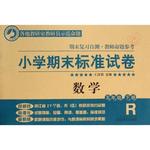��Ŀ����
�������
�ٶ����Ǹ���ѧ�����ģ� �������˵����Ӣ����ֲ��������ţ� �ҽ���2���ڱ��й������⽻�μӡ�������Ӣ������ֲ�������дһ���ţ��˽�һ�¸þ��ֲ��������Ϣ�� �Ա���롣Ҫ�����£�
1. �����Լ�ѧϰӢ��������
2. ��ѯ������ˣ����������������Լ���ȣ���
3. �����Լ�������Ը����
ע�⣺
1. ����100���ң�
2. �����ʵ�����ϸ�ڣ���ʹ�������
3. ������Ϊ��д�á�
��ϰ��ϵ�д�
 Сѧ��ĩ���Ծ�ϵ�д�
Сѧ��ĩ���Ծ�ϵ�д�
�����Ŀ

